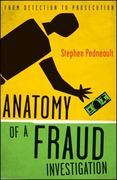Question
2. Exchange rate: read the case study of China Pegs the Yuan attached at the end of this assignment, and answer the questions below: a.
2. Exchange rate: read the case study of "China Pegs the Yuan" attached at the end of this assignment, and answer the questions below: a. "many economists estimated the level of the undervaluation of the yuan at 15 to 25% in 2013". Explain what has led to the undervaluation of the yuan? Illustrate in a demand and supply diagram with correct labeling. b. Show the effect of the "large-scale exchange market intervention" in your diagram above. c. China's exchange rate policy has led to its trading partners feel that China is "subsidizing its exports". Explain how subsidizing happened.
d. Use demand and supply diagrams to show how each of the following policy changes might eliminate the disequilibrium in the foreign exchange market for yuan. Briefly explain in each case. I. An appreciation of the yuan. II. Removing restrictions on Chinese who want to invest abroad. III. Imposing taxes in Chinese exports.
Case Study: China Pegs the Yuan In the early years of the twenty-first century, China provided a striking example of the lengths to which countries sometimes go to maintain a fixed exchange rate. Here's the background: China's spectacular success as an exporter led to a rising surplus on current account. At the same time, non-Chinese private investors became increasingly eager to shift funds into China, to invest in its growing domestic economy. These capital flows were somewhat limited by foreign exchange controlsbut kept coming in anyway. As a result of the current account surplus and private capital inflows, China found its currency yuan under appreciation pressure at the target exchange rate, the demand for yuan exceeded the supply. Yet the Chinese government was determined to keep the exchange rate fixed at a value below its equilibrium level. Although China allowed a small revaluation (appreciation under fixed exchange rate policy is referred as revaluation) of the yuan in 2005, many economists estimated the level of the undervaluation of the yuan at 15 to 25% in 2013. To keep the rate fixed, China had to engage in large-scale exchange market intervention, selling yuan, buying up other countries' currencies (mainly U.S. dollars) on the foreign exchange market, and adding them to its reserves. From 2011 to 2012, China added US$130.44 billion to its foreign exchange reserves, and by December 2012, those reserves had risen to $3.3 trillion. To get a sense of how big these totals are, in 2012 China's GDP was approximately US$8.25 trillion. This means that in 2012 China bought U.S. dollars and other currencies equal to about 1.6% of its GDP, making its accumulated reserves approximately equal to 40% of its GDP. Not surprisingly, China's exchange rate policy has led to some friction with its trading partners, who feel that China is, in effect, subsidizing Chinese exports.
Step by Step Solution
There are 3 Steps involved in it
Step: 1

Get Instant Access to Expert-Tailored Solutions
See step-by-step solutions with expert insights and AI powered tools for academic success
Step: 2

Step: 3

Ace Your Homework with AI
Get the answers you need in no time with our AI-driven, step-by-step assistance
Get Started


